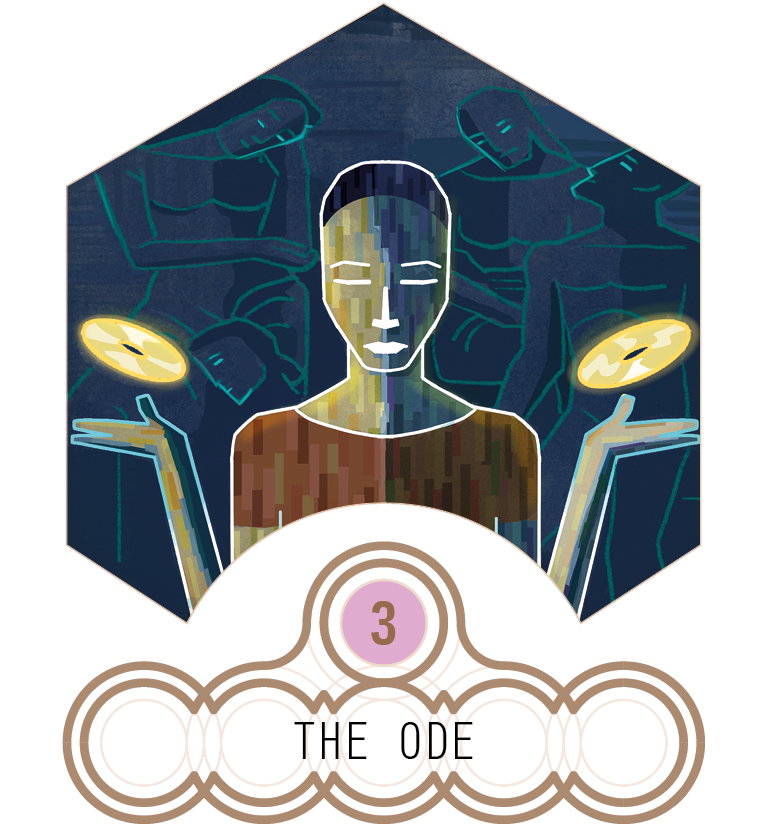
48°12‘43.0″N 16°22’03.6″E
48.211946, 16.367676
The advent of the Compact Disk was quite the event. It was presented in Salzburg of all places, by a consortium of the biggest tech manufacturers of the day in the year 1981. But what wasn’t seen in the press conference is what lead to some of the design decisions behind the CD.
Beethoven’s 9th Symphony, “the Ode” as it was commonly known amongst its peers, was a masterwork, and as such, it had an ego to go with it. It knew it was grand. It knew it had both the fireworks and the quiet sensitivity that would speak to a grand audience. And, it had a famous father. Beethoven had spent a lot of his life in Vienna and for parts of that he moved around somewhat regularly. Thus most of his symphonies had seen quite a bit of city and had fallen in love with it. What might be most intriguing about the 9th symphony, the symphony thought to itself, was the fact that her father was completely deaf, when he wrote it. So in a way, they never truly met. She was an act of pure creation, an act that required Beethoven to use all of his imagination and experience to craft it.
The arrival of high quality audio analog media such as the gramophone, and the record were all wonderful inventions, but they had one simple problem: they weren’t long enough for a full recording of the 9th symphony, which required listeners to swap the records in between movements. A fact that the Ode thought was ridiculous. Listeners should be able to enjoy it’s 2nd and 3rd movement without being interrupted. Then, while visiting one of Austria’s most famous conductors, it heard a rumour. Sony and Philips were discussing a new medium. It would be called the “Compact Disk” and they were unsure what size it should be. Additionally they were looking for a celebrity to endorse this new medium and sell it to the public. “Perfect timing!”, the 9th symphony thought. “I can be that celebrity!” It pleaded to the famous conductor, so he would suggest it. It caressed his ears. Took residence in his head and in his heart. Until finally he was ready to go and meet the executives of those technology companies who were responsible for the production of the new CD-format. The meeting didn’t last long. Sony, Philips and Polygram had been looking into celebrity-endorsement and the Ode fit perfectly. A time was chosen: April 15, 1981 and a place: the ORF in Salzburg.
And it was a full success. The CD spread rapidly and gained popularity as the new digital format of audio production. The 9th symphony bathed in its success and joy was spread throughout. But slowly, as computers became more powerful and chips smaller, the Compact Disk lost its importance. The decline in the 2010s was brutal, until sales halted at almost nothing in the 2020s. It had changed its form to include one as an mp3, which was much better than the Compact Disk it thought, but it couldn’t deal with the constant need for the continuous presence on social media. That’s the first time it felt something grow inside. It came from deep within and spanned all forms it had. Most rapidly it spread through a mural however, at one of Beethoven’s favourite apartments in Vienna.
Instead of joy, all of a sudden it spread grumpiness. Grant, as the Viennese called it. It knew it well and, because the 9th did not do anything half-heartedly, it bathed itself in it, spread it, where she could. And soon, there was a gloomy, eerie feeling emanating from the mural in the Tiefer Graben. Until a certain Zeynep happened to bike past it, on their way to digitise a certain Georgina’s Monster database.